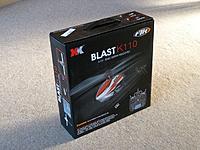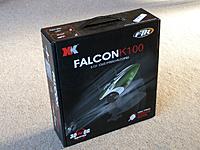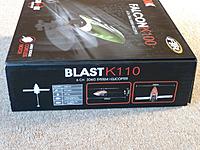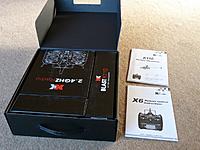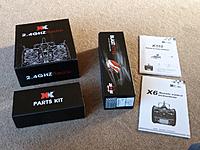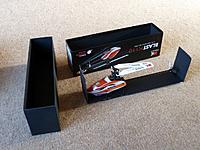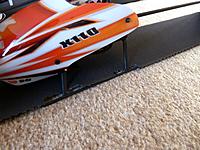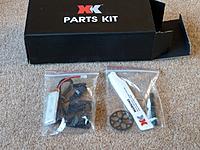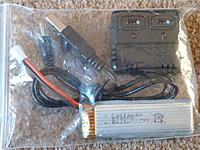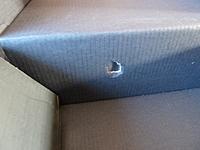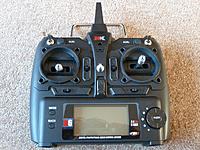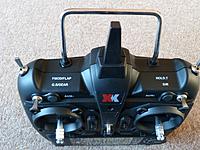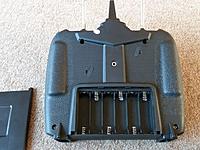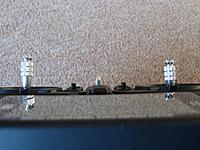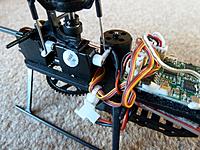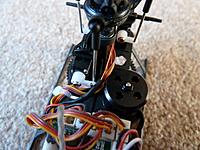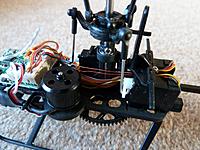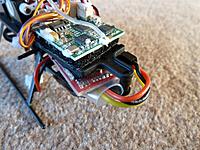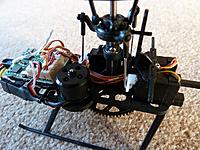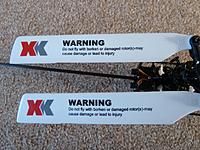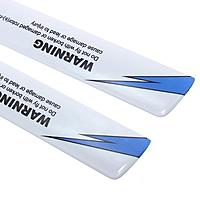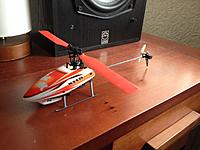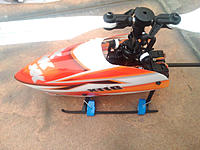|
|
|||
|
|
Mini-Review
XK K110 3G/6G Small CP Heli thread - same or better than V977? (Work in Progress)
Most of the info about the K110 is contained in the main V977 thread, as the 2 helis are apparently identical, except for differences in the electronics. But IMHO it deserves a dedicated thread, and this review thread's aim is to be just that, as well as collect known mods and best practices, that are now scattered along the V977 thread, and on other places
Specifications: Before these can be verified, here's a list of the specs according to Banggood: 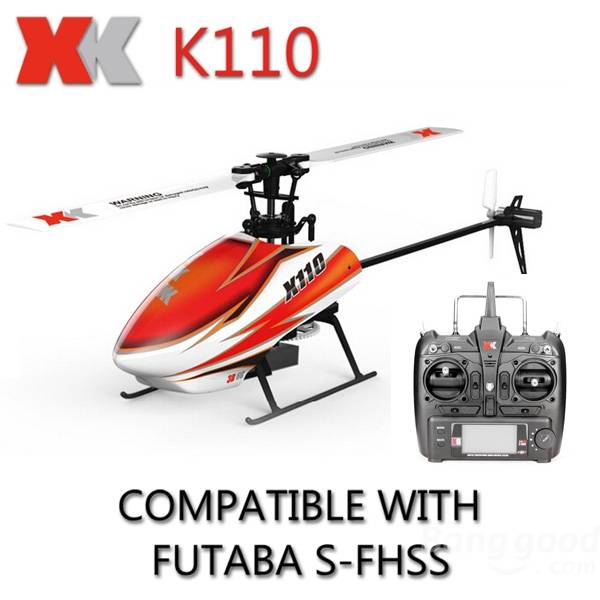 Rotor Diameter: 245 mm Body Length: 270 mm Height: 77mm Flying weight: 58.5g Battery: 3.7V 450mAh 25C Flight time: About 6-7 minutes Main Motor: Brushless 1106 11000KV Tail Motor: Brushed 0716 Control Distance: About 120m Charging Time: About 50-60 Minutes 3D and 6G mode;3D aerobatics;Hovering flight;Small and big rudder setting. Transmitter can switch from Mode 1 to Mode 2, vise versa. Compatible with FUTABA S-FHSS Features: 1 Flybarless CP helicopter, aerodynamically designed to achieve unparalleled stability 2 Brushless 1106 motor power is stronger.Battery 3.7V 450mAh 25C 3 Transmitter supports switching between 3-axis & 6-axis gyro modes 4 3D Mode activates 3-axis gyro, enables aerobatics such as flips, rolls inverted flight, funnels and tick-tocks 5 Normal (aka 6G) activates 6-axis gyro, allows stable flight, suitable for beginners 6 Transmitter has 3D aka Idle-Up switch, Throttle Hold switch, large LCD, low voltage warning. Hovering midpoint setting allows setting of the hovering point. 7 Special USB charger, can charge 2 batteries. Package Includes: 1 x XK K110 helicopter 1 x Transmitter 1 x Charger 1 x Battery 2 x Blade 1 x Gear 1 x Manual RTF Package: http://www.banggood.com/XK-K110-Blas...-p-974729.html BnF Package: http://www.banggood.com/XK-K110-B-Bl...-p-976341.html The BnF package includes the heli, manual, battery, charger, spare main blades and tail blade, spare main gear and tools. Some of the listed specs on the BG website may need a little "translation", like the "small and big rudder, setting", that clearly refers to low and high rates. "Hovering midpoint setting" translates to being able to tune the throttle and/or pitch curve. Something that wasn't possible with the first RTF version of the WL Toys V977, which is closely related to this heli. But we will later focus more on similarities and differences between the K110 and V977. Update 15 september 2015: K110 has arrived a few days ago, but my foot hasn't fully healed yet, plus weather conditions are preventing a good maiden flight anyway. Usually I'm not that thrilled by discussing the unboxing, whether in a video or in words, but this one deserves some attention for that. Unboxing: The XK K110 comes in a very convenient box with carrying handle. As the next pictures show, it doubles up as packaging for the brushed version, the K100 Falcon: 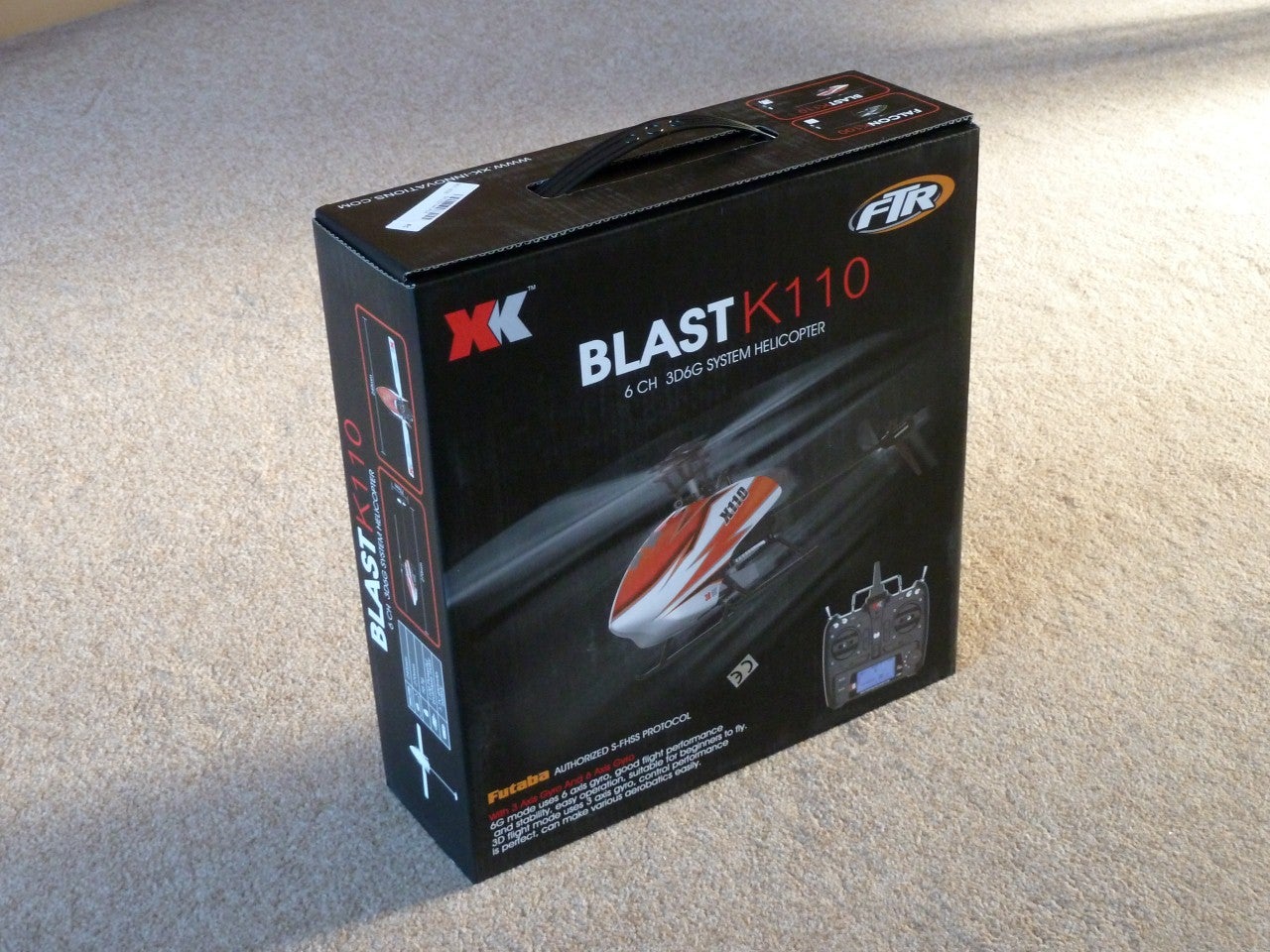  On the side you find the most important specs of both helis, and at the moment the K110 related ones are most interestong for us:  Once you open the box, inside are 3 more neatly "interlocking" boxes, and 2 manuals, one for the heli, and one for the transmitter. One of the smaller boxes contains the radio, one holds the heli itself, and one is labeled "Parts Kit":   My first impression was it looked just like the brilliantly packaged Align Trex 100S kit. This reveals much thinking has gone into the packaging, and this isn't everything yet. Let's have a look at how the heli is stored inside it's thick cardboard container: 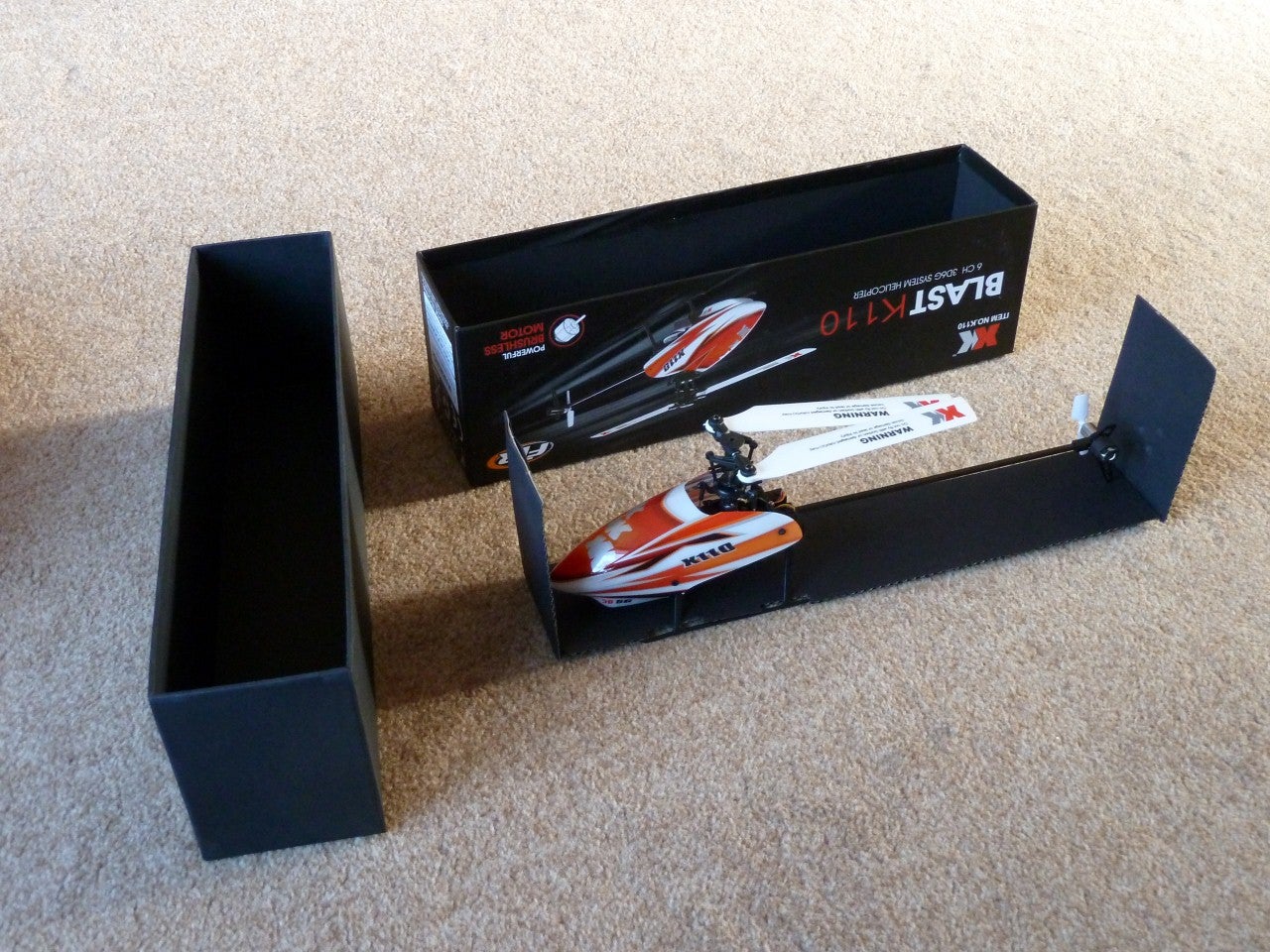  I'd say this is pretty clever, no foam or plastics needed, and yet the heli is well secured, and can easily be put back in the box for storage, after a flight. Sadly enough, less thinking has been invested into the English translation of the manuals, which has resulted in lots of poorly written sentences, causing a lot of "let's try to figure out what this section is trying to explain..." moments. For convenience, a scanned copy of the manual (courtesy of Anderu) can be found here: https://www.rcgroups.com/forums/show...1&postcount=57 The next box, with the parts, seems a little off at first. It's mostly empty, as it contains a battery and small USB charger, spare main rotor blades and tail rotor, and a screw driver:    Apart from the fact that not surprisingly, the main blades contain the same spelling error in the word "broken", this big "Parts Kit" box seems like a waste of space. But when you realize the package is probably designed with the idea to use it for storing the heli in between flights, the big and mostly empty box starts to make sense. It will give plenty of room to store extra batteries, and other, seperately bought spare parts, to be kept with the heli, and always be within close reach. The stock battery is identical to the one Gearbest is selling as replacement battery for the V977. It has a label saying "Fullymax", apparently a LiPo manufacturer that's been around for quite a while, and is rated at 450 mAh. Weight is about 11.75 grams and no surprise, it uses the Walkera-style plug we've seen on the V977 as well. The USB charger is identical to the one that is bundled with the V977, a 2 port charger. With no battery attached, each port has a voltage of 4.64 volts. It starts charging at around 350 mA, so nothing drastic. When charging 2 batteries at once, you will need a USB source capable of more than 500 mA current, or charging will take longer. The biggest of the 3 smaller boxes, contains the radio. This box is a fraction too small, as the plastic part covering the antenna, has poked through the "radio box" and even through the big box's side:    The transmitter itself was looking ok, and seems to have escaped unharmed:    As you can see it has some extra switches, and a rotating dial, to navigate through various settings. It runs from 6 AA cells, and as added bonus, can be switched from Mode 2 to Mode 1, and has the option to adjust stick length:   Apart from the transmitter having poked a hole in the box, there were a few things that were not fully ok when making a closer inspection, but we'll get to that later. It is clear that XK did some extra effort to ensure the RTF set contents get to their new owner safely, and that it's not directly needed to buy something to be able to bring the heli along to the field, as the box can very well fulfill that role. Hope the same clever thinking and attention will be present in the contents of the box. Looking closer at the Heli and Pre-Flight checks: Even though the packaging shows XK is trying hard to get this product in one piece at your doorstep, it's always smart to look at a new heli in detail, before spooling up those blades. In this case it seemed well put together, except the tail motor wiring: 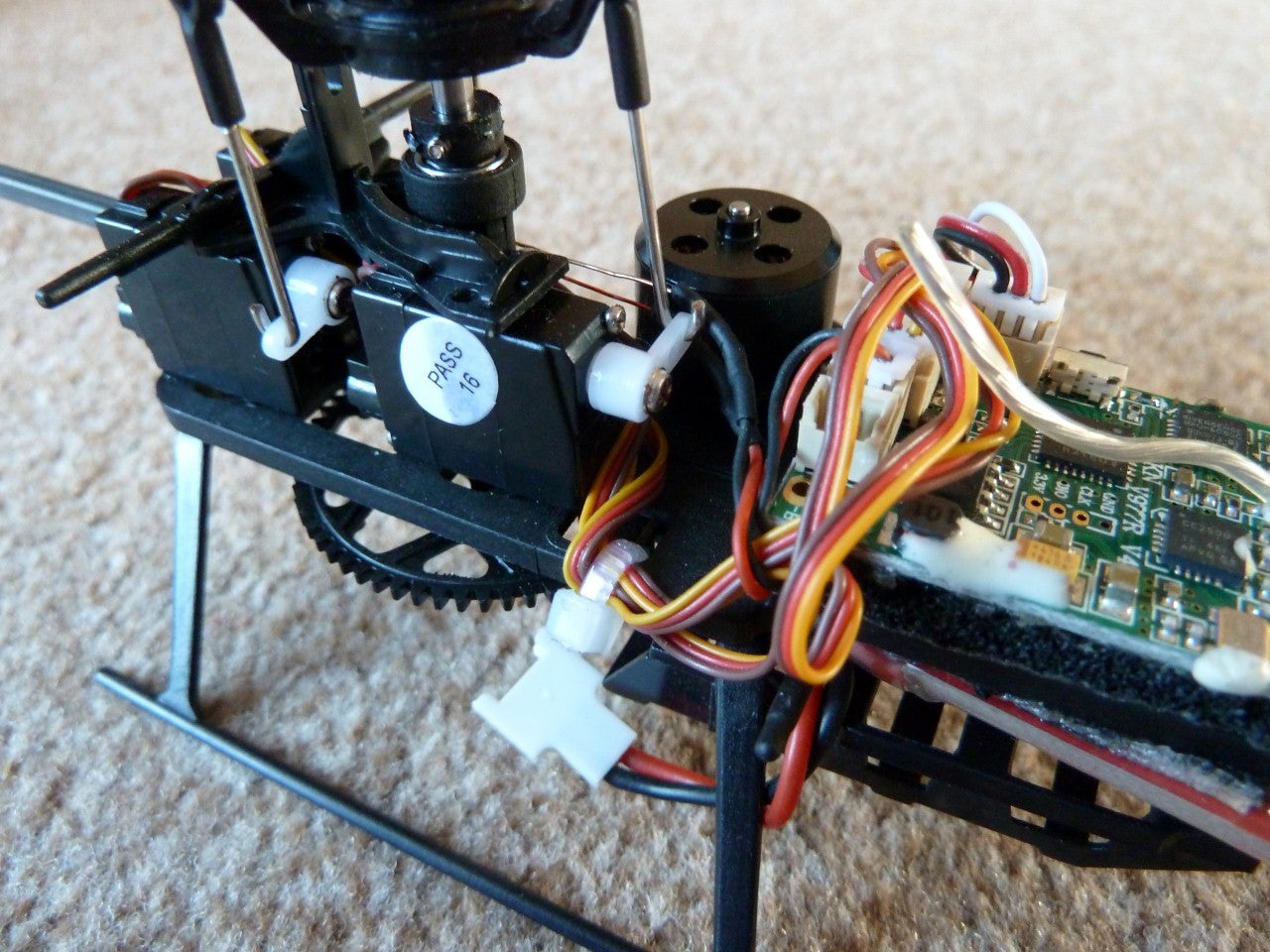 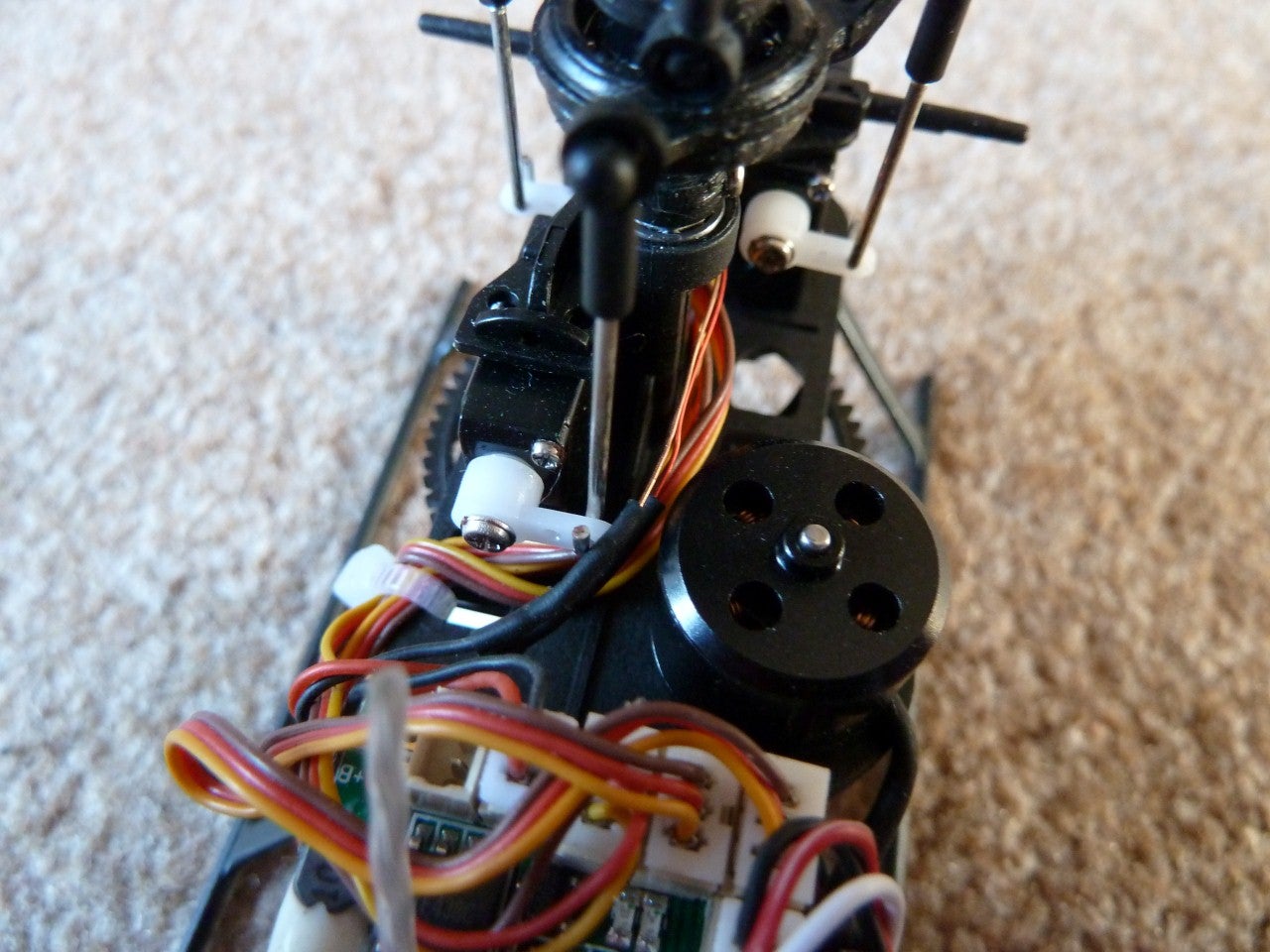  As you can see, the wiring touches the front servo horn, and this is an accident waiting to happen. Luckily it was easy to move it out of the way: 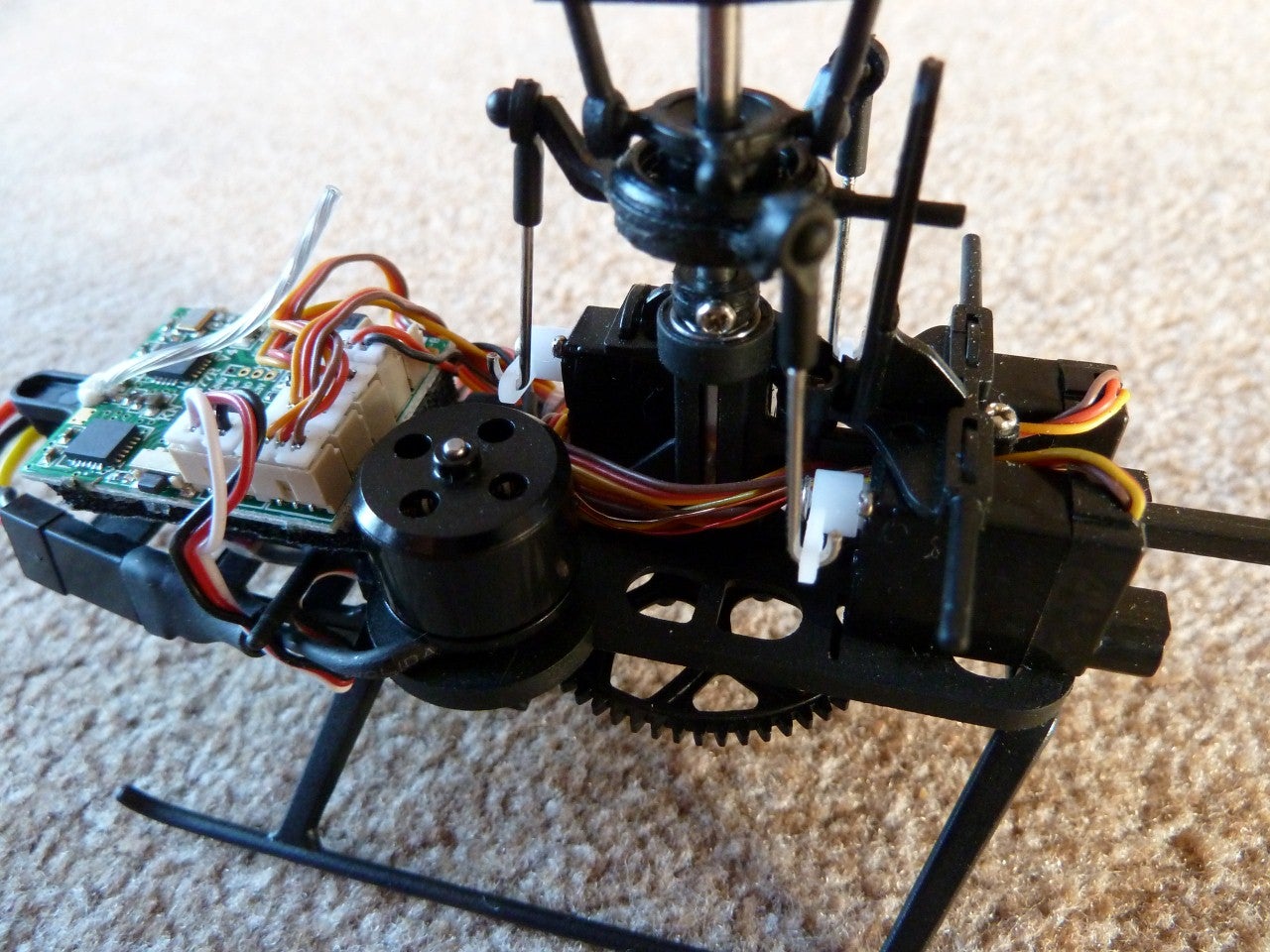 Might have been overlooked during assembly, or a result of the heli being loose in the box. And that, in turn, could have been overlooked, or caused by Customs having opened the package for inspection during transit. The ESC is not fully mounted in the middle, as the clear heat shrink prevents that. Not sure how this is on my V977, I need to have a closer look at it to compare. If needed to be centered, a little trimming of the heat shrink would be all it takes to be able to correct this:  For those that are into the specs of various chips and such, here's a shot from the top of the board:  And with such a double warning, a pilot must be bound to be successfull:  Though I wonder if this tail blade is a bit "borken" as well, as it's a little V-shaped:  Transmitter: One of the things that sets this K110 apart from the V977, is the transmitter. Not only does it use a different protocol, Futaba S-FHSS, but it offers a heli-program, as well as one for fixed wing (!) aircraft. For the latter if offers Expo, Throttle Curve, and various mixes, like Delta Wing, V-Tail, and Flaperons. On Heli Mode, it offers Throttle Curve, as well as Pitch Curve, and adjustment of the Gyro. The display is backlit, and if I understand the manual well, it even has model memory to store up to 10 (!) models. Pretty amazing for this RTF transmitter. Apart from that, it has four 2-position switches, for Throttle Hold, Idle Up, 3G/6G mode, and selecting high or low rates, which the manual refers to as "the size of the rudder volume switch". It also has built-in safety, if powered up with Idle Up activated, it will beep, and not arm the throttle channel. And as mentioned during unboxing, the length of the stocks can be adjusted, as well as changing the control layout from Mode 2 to Mode 1, if preferred. Maiden Flight! Since it didn't look like weather was going to be well enough, with a constant mix of rain and wind, I decided to do the maiden flight indoor. Powered up the heli, switched on TX, binding was very fast. I hit throttle hold, and moved the cyclic stick, as well as the throttle/pitch, to see if the servos were al moving smoothly. No problems there, so zeroed throttle, and released throttle hold. When increasing throttle, the tail starts first, to be ready when the main blades spin up. So the tail is pretty well locked right at spool up, even with the heli on a smooth surface, and no rubber bands or tubing around the skids. It did take a lot of throttle to get it up in the air, and had very little power to spare. The motor and gears sounded just fine, no anomalies, and the high pitch of the sound seemed to indicate these were spinning at high enough rpm. I landed and double checked for a main gear that shifted down the axle, no such thing, it was snug and tightly against the lower main shaft bearing, no vertical play. Next step was to see if things would be better in idle up, but it did have a little more power, but not nearly enough. Landed again, and with TH on, checked pitch again, and it seemed like the pitch was about the same as on the V977, which on mine, has limited climbing power as well. So I looked again at the pitch curve setting, and it had 70 as max value, which did seem a little low to me. I upped it to 85, and adjusted the values between low point and the max pitch accordingly. Despite that it's no top range transmitter, this adjusting went pretty easily. And it paid off, after that the throttle response was nicely "punchy" without being twitchy. Note: Though adjusting the pitch curve works as a "quick fix", it is better to correct an issue like this mechanically, but adjusting the links between swash and servos. Adjusting the pitch curve needs to be done for both normal and idle up mode seperately, and it doesn't take into account that the blades should be around 0 degrees pitch with the pitch/throttle stick at neutral. Because I was doing this testing indoor, I still had it in 6G mode, and now that it could easily maintain altitude, it was time to test hover stability. It wanted to move a little left and forward, so I used the trims to settle that. After this it would stay within a 1 metre "box", with a little drifting left and right, probably due to the turbulent air from the blades. I have to look at the manual if this heli has some kind of "hover debug", like the V977, to tune handsfree 6 axis gyro mode hover. but at least the K110 is already more stable than my V977 ever was. A little later, I read in the V977 thread about gyro calibration, might try that next time, if on the next flight it doesn't hold steady hover. But first I have to say something about the piro-compensation. I used to be not a real fan of this, based upon flying my V977. It also has piro-compensation, but over-compensates, so when making a left (counter clockwise, if looking from above) rudder turn, instead of slowing down, or keeping same speed, it tends to accelerate the heli. And the opposite happening on right rudder turn. All my other helis, without piro-comp, do the opposite, accerelate on right turn, slow down on right. Very confusing, but on my K110 they got it just right. I can make a slow or faster piro in the living room, and the heli doesn't move anywhere, just purely rotates around the main shaft, like it was suspended from the ceiling. I think this will make flying circuits and figure 8s outside quite a bit easier. There is no real LVC, at least I couldn't notice it, but you can clearly hear the headspeed dropping when the battery gets low. Especially how it recovers after some stick input, like a banked turn. Once you are triggered to notice this, you can land it safely and still keep battery on about 3.70 volts resting voltage. You could also use a timer, or fly on till a forced descent, but taking the battery that low will likely harm it sooner or later. Btw, I did overlook a little problem during pre-flight checks, wonder if you noticed it too... Update #1 - 19 september 2015: So... did you guys/gals spot the error on some of the pictures? Right, the linkage to the front servo had moved too far up the swash arm, and was no longer locked on the ball. It still flew amazingly stable, which means it's a very forgiving design. I snapped it back on, and did some more hover testing indoor, as the weather is still awful. I got up to 5 minutes on a battery, without any real signs of power fading, and made a perfect, soft landing, without any unwanted spinning as the main rotor spooled down, on a very slippery surface. Gears and gyro work very smoothly together, I must say. Compared to yesterday, I did need a few click of trim to counter a slight drift, som either I didn't have it trimmed well enough yesterday, or it's due to snapping the servo linkage back in place, or I may need to do a calibration, as the "enigma coded" manual seems to suggest. In 6G mode it's so stable, that despite this being my second longer flight with the K110, I felt comfortable doing small circles in our not overly big living room. Normally I don't do that with a high headspeed brushless powered CP, only with my 45 degree flybar FP micro helis, or with small quads. Chances on hitting something if you slip up just a little are so much bigger than outside, where you have space to correct errors you are bound to make when flying a new "bird" that may need some fine tuning to get it right. It is not completely fair to compare with the Mini CP, due to the excellent 6 axis gyro and piro comp, making the K110 even easier to point somewhere and fly there than on a 45 degree flybar FP, but if you do, the K110, at least in 6G mode, is better suitable for indoors. In 3G mode, if it flies roughly the same as the V977, this won't hold, because the Mini CP is hard to beat for smoothness and feeling of control. But the extra power of the brushless motor on the V977 and K110 compensates for that, I think. Giving each bird it's own area in which it stands out from the rest. Where adding a brushless kit to the Mini CP may once again turn the tables, but I understand it does become more noisy that way, which is why I have left my Mini CP helis stock so far. But back to the K110, if it behaves just as well outside, as it does inside so far, I will seriously consider replacing the board in my V977 with a K110 board, and bind it to one of the 9 free model memory spots of the X6 transmitter. Update #2 - 19 september 2015: Well, much to my surprise, end of this windy and rainy day brought calm dry weather, with almost no breeze at all. Too tempting not to take the K110 outside. And glad I did, because it lived fully up to the expectations. Flying in 6G mode for now, just to see if on this one it actually works, and it works brilliantly. Right after take off I was flying S-patterns, doing circuits, figure 8's. The piro-compensation is spot on, it really does just what you tell it to do, regardless of what you do with the rudder. In 6G mode, it flies just like the Bravo SX or Solo Pro 270, but with much more precision and better speed, and no 45 degree flybar-antics, or ballooning, which is typical for flybarred FP helis. Despite flying on 6G mode, and low rates, it was much faster than the V977 on low rates in 6G, where you had so little control authority, that high rates were needed to get it going. With the K110 you barely notice the "driving aid", keeping the heli stable, is there. It just helps to make a relaxing evening flight with this CP heli, instead of taking over. Even at the end of the battery, it could still do handsfree hover, with just a tiny drift mabye. A soft landing concluding this amazing flight. And the tail motor wasn't even warm. So far pretty impressed by this K110. Seems stable enough to pick up for pilots with little experience, but do know basics about orientation on a heli. Or for more experience pilots, that just want to cruise around something that flies precise, but doesn't require constant corrections with the sticks.. Update #3 - 25 september 2015: Today it was pretty breezy, but the first flights have strengthened confidence that the K110 could handle this. My V977 would have been too twitchy and lack pitch authority, and the 6 axis mode could start a sudden drift. The XK did much better. I only had to worry about keeping altitude in a gust, because the cyclic and rudder response was just like a coax, except the heli moved much faster, more banking allowed, and with more headspeed and power. I could just do figure 8s and fly around casually instead of struggling to keep the nose into the wind and working hard not to crash. The 6 axis stabilizing works great, no drifting that develops when you have it lean into the wind for a while, it just flies and follows commands. I'm even more impressed than after the flight in dead calm conditions. Update #4 - 9 october 2015: Still flying well, though I need to have another look at the pitch settings. First, my altered settings give a little "jump" when doing pitch pumps. It does give the heli good bail out climb power, but a more linear response would probably be better in the end. Also currently the pitch is not zero with throttle at mid-stick, which is a pre-requisite if I want to progress to 3D tricks. Update #5 - 10 october 2015: Got a second one in today, as much needed backup, when I start to try to venture into 3D flight. This bird came with blade pitch set more correctly, as it flies well with the stock pitch curve settings. It also had the ESC perfectly centered, so I didn't have to trim some of the shrink wrap, and push it back center, like was needed on the first K110. I did have to loosen the screw holding one main blade, as it was a bit tight, and didn't fall down when tilting the heli sideways. Also the tail motor wire was free to touch the main motor, so I re-routed that a little, to give good clearance. Hovering indoors, as well as an outdoor flight in some breeze, went well. Update #6 - 25 october 2015: Today I was able to shoot some footage of flying in 6G mode:
Update #7 - 13 december 2015: I liked this one so much on 6G mode, that so far I didn't go to 3G mode yet. On the V977 I was forced to fly 3G, because it would not be stable in 6G mode, with random hard drifting. But the K110 is very solid in 6G, and you don't overly feel the stabilization, it can still move quite fast. But as it was quiet weather today, the time had come to try without "training wheels". The first seconds I over-corrected, but then the feeling got better, and soon it was locked in steady hover, as if in 6G mode. Flying some turns still felt somewhat "shaky" but at the end of the battery I pulled of some short banked turns. Preliminary Verdict: It's a little too soon to fully comment on the flight performance and overall quality of this little "bird", as I haven't gotten to 3D flight yet, but the impressions gained so far do lead to a few preliminary conclusions. Packaging is absolutely marvelous, and apart from making sure the contents have the highest possible chance of reaching the buyer unharmed, the box can also be used as compact means of storage for everything. The frame design we know from the V977, and there is no reason to assume this heli will be less rugged than the WL Toys version, but since I haven't crashed it yet, no guarantuees about this yet. What makes this XK version really shine, apart from the well programmed flight control board, is the transmitter, which has features you don't see in a bundled RTF transmitter. Many of the features, like the model memory, and the seperated fixed wing programming and mixes, as making this transmitter suitable to control a variety of aircraft, and if you don't use the extra mixes, it could be used for a boat or car as well, if the driver prefers sticks over pistol grip style. Considering hopw versatile the TX is, it's a shame the English translation of the manual leaves a lot to be desired. Luckily, the menu system on the TX isn't overly complicated, and at least to me, felt quite intuitive. Pros: - Excellently packed - Brushless main motor - Rugged design - Stable hover, in both 6G and 3G mode - Piro comp is "just right" - Very versatile transmitter for an RTF package - 6-axis gyro works well, helps beginner pilot, but also convenient if you want a relaxing (evening) flight - Well visible in the air due to orange color - Very stable in ground effect, making landings and take offs relatively easy Cons: - Poorly translated manual - Needed to adjust pitch curve right away, as heli would barely lift off with stock settings (might have been a fluke, a second K110 flew right out of the box, without the need to adjust any settings) - Transmitter box is slightly too small, risk of damaging the antenna cover during transport - Has some slop in linkages, like it's V977 sibling Suitable for a beginner? Years ago, a small CP heli would be about the most challenging to fly, and much more difficult than a bigger CP heli. due to a small heli being more sensitive, and twitchy. On this one, and the V977 (if you get one with a solid 6 axis gyro, unlike mine, that would suddenly drift hard in a random direction) it is much different. In 6 axis mode, and also aided by the piro compensation (helping the heli turn on the spot) it is not harder to fly than a 45 degree flybar FP. The main pitfall, if coming from a coax or single rotor FP, is unlearning to zero the throttle when a crash is imminent, as on a CP heli this will only make the heli slam down into the ground even harder. Instead, the new pilot should familiarize him/herself with the Throttle Hold switch. Another challenge is to grasp the concept of pitch and throttle curve, as at some point it might be needed to adjust these settings. Apart from that, flying is pretty straightforward, and in a way probably easier than a 45 degree flybar design, as the 6 axis gyro doesn't have the quirks of a flybar. The biggest challenge will be to switch from 6G mode to 3G mode, where there is no self stablizing. On the other hand, the heli is very stable, and if it's brought to level flight with the sticks, can easily hover on the spot for several seconds, without any stick inputs. So if approached with proper care for the differences between this and a fixed pitch desin, this can be a good next heli for a fresh pilot. (to be continued) |
||
|
Last edited by SoloProFan; Dec 13, 2015 at 06:09 AM.
|
|||
|
|
|
|
|||
|
|
Hints, Tips and Modifications:
First, thanks to all that have posted this info, as most are not my own findings, but I merely had the honor to compile it here. Sharing findings in this way, is what makes an internet forum a great place to discuss the beautful RC hobby! Pitch Curve Settings: Basically a must to look after with any CP heli, whether RTF or built from a kit, but since my K110 could barely hover with the stock settings, I'll mention it here as well. Accessing the menu to alter the Pitch Curve is easy enough, first you press and hold the "Mode" button, till you hear a beep and the display starts to flash. Then turn the rotary dial on the right clockwise to select "P. Curve" and press down on the the dial. The number "1" will be flashing, this is the first point in the throttle curve, "2" the second, etc. Rotating the dial you can select which point to adjust, pressing down on the dial singles out that point, and only the number you selected starts to flash, with the pitch value setting flashing too. Rotate the dial to increase or decrease the value, in 1 step increments, then confirm with another push on the dial. When ready, press "back" and to get to the main settings menu. If you don't want to alter any other settings, press "back" again, to exit the menu, and return to the main control screen. Stock the pitch curve is programmed like this 1 - 40 2 - 45 3 - 50 4 - 60 5 - 70 I had to increase the values, to be able to hover at a lower throttle setting, as well as getting a good throttle punch response. My current settings are: 1 - 40 2 - 45 3 - 60 4 - 70 5 - 85 Note that the best pitch setting may vary between individual helicopters, and just like the values given in the manual, should be considered guide lines, used as starting point. I may need to change these settings when starting to play more with idle up, as with my current adjustments, the balance between pos and neg pitch might not be well tuned now. After some more hover tests, I found the value of 85 is a bit over the top, as it makes a little jump when increasing the throttle stick. The tail holds well throughout the entire battery, so it's not like getting in the danger zone of "tail blow out", but with these settings it's less smooth than the Mini CP. I'll experiment with lower values, for instance 80 as upper limit, or better, adjust linkages first, then fine tune with pitch curve adjustments. Ideally the pitch of the blades should be zero degrees at 50% throttle. Though best is to try reach this with adjusting the servo links, this can only be done in half turn increments, while the pitch can be electronically adjusted within 1% increments. So best to use that for coarse adjusting, and when some additional fine tuning is required, adjust the pitch curve. Note: This pitch curve isn't optimized for 3D flying, but more for some cruising in 6G and right side up 3G mode. Update 6 jan 2019: This video, found on Youtube, can also be very useful to setup your XK K110:
Calibrating the 6 axis/3 axis gyro Like the V977, this copter has the option to adjust the hover in 6G mode. As the manual isn't too clear on this, I was happy to see member Anderu come up with a translation of the manual's "borken chinglish" To tune the handsfree hover in 6G mode, try this: 1. Switch on TX 2. Switch on K110 and wait for it to bind to TX 3. Switch to 6G mode 4. With the throttle stick down, pull down the elevator stick and hold the position 5. Wait for LED (I did not check which one) to blink 6. Lift off K110 and hover it in one spot 7. While the K110 is hovering in one spot slowly land the heli and keep the throttle at 0 8. Pull down the elevator stick again and hold the position 9. Wait for the LED to stop blinking and you're finished with the calibration I've not tested 3D gyroscope calibration but I'm sure the steps are like below : (MODE 2) 1. Switch on TX 2. Switch on K110 and wait for it to bind to TX 3. Switch to 3D mode 4. Move and hold the throttle stick to the bottom left location. At the same time move and hold the cyclic stick to the bottom right location. 5. Wait for LED (I did not check which one) to blink 6. Wait until the LED stop blinking and the gyroscope calibration is complete Binding a BnF K110 to your X6 radio, or using a different Futaba S-FHSS compatible radio to fly the K110 If you already have a compatible radio, it is possible to get a BnF version of the K110, and bind it to your current radio. Or get a second BnF for backup, and bind another model memory slot on the X6 transmitter of the RTF heli. The manual does try to explain this, but the poor translation may make it somewhat difficult to get it right. Here's an attempt to translate the steps involved (work in progress): 1. Choose a memory slot on your TX for use with K110 - Press and hold both "mode" and "back" buttons, "MDL. Sel" starts to blink - Press down on the rotary dial to access model memory selection - Turn the rotary dial to select the memory slot you want to use, and press "back" to confirm 2. Use the rotary dial to select Model type, you will see either a jetplane or a heli icon blinking. When the right type of model blinks, press "back" again 3. Use the rotary dial again to select swash type, and make sure it indicates the 90 degree swash. On other transmitters this can be called the H-1 (normal) swash type. 4. While the TX is on, power K110. You should see a blinking red light on the K110 board 5. Press and hold the little bind button on the K110 board until the blinking light stops blinking, a little later a blue light comes on and you're done. It's easy to locate the little bind button. (Refer to page 8 if couldn't locate it, it's called code key) For more details, check this posting: https://www.rcgroups.com/forums/show...7&postcount=47 Alternate batteries: The stock batteries perform ok, so there is no direct need to replace these, but when in need of extra batteries, these 520 mAh "GOO" label lipos work well. These seem to have better punch, but are a little heavier than stock. You can find these here: http://www.banggood.com/5-x-V930-V97...-p-923558.html The new Turnigy Graphene 600 mAh are also an option, as user Flyingboats reported. He mentioned though these are a tight fit and you need to remove the two plastic bumps at the back of the battery tray where you insert the battery. Other change is the connector which is JST, but this can be a worthy change as quite a few people seem to have had poor connections on the stock connector, resulting in a loss of power mid flight. The graphenes are heavier than the Goo 520 mAh batteries. and don't seem to last many cycles, so these may not be worth it in the end. Update 14 december 2019: Over time, more options for batteries have been suggested. The NanoTech 300mAh 45C/90C seem to be a good option. Beware that these batteries come with reversed polarity, and need the wires in the connector swapped. Besides those, the GNB 450mAh 80C are also a favorite. If you buy these from Banggood, make sure to select the "white plug" version, as that comes with the Micro Losi connector that is fitted to the K110: https://nl.banggood.com/GAONENG-GNB-...p-1262174.html Different main blades and tail rotor: Like the V977, it is possible to fit other main blades and tail rotor. Very popular is this set from Banggood, giving main blades in 3 bright colors, as well as 2 tail rotors for each color: http://www.banggood.com/WLtoys-V966-...-p-936263.html With for instance the orange blades, it can look like this: 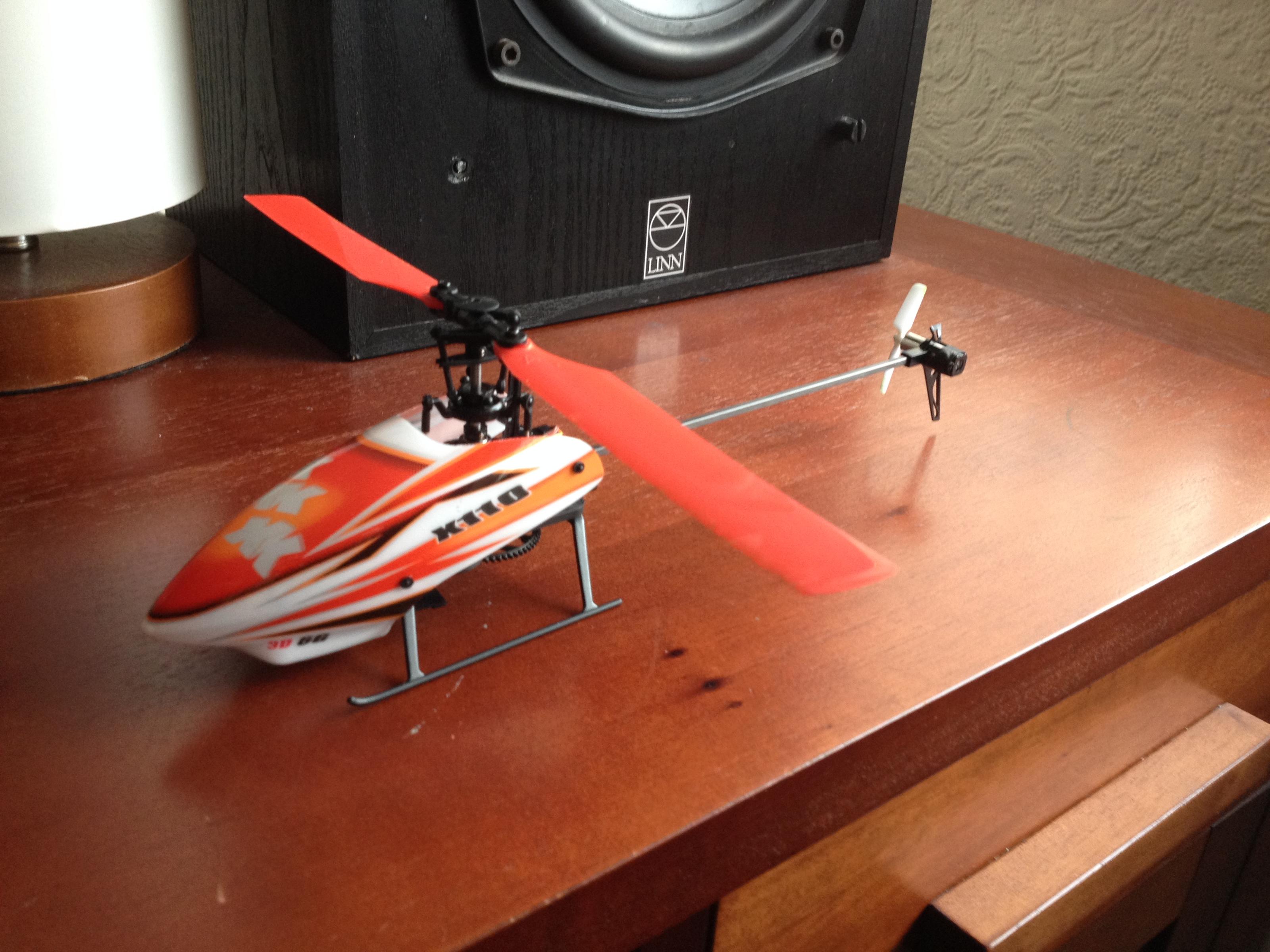 Some also reported getting better tail hold using the Walkera Mini CP tail rotor. Update 17 december 2019: The K120 tail rotor has been reported to work well on this K110, especially when doing hard 3D. When hovering, there might be a bit more tail wag, which apparently isn't visible during regular flight. So while a bit of a trade off, as it affects hover stability somewhat, overall the K120 tail rotor only has benefits, and there are no reports of the rotor affecting tail motor life span. |
||
|
Last edited by SoloProFan; Dec 17, 2019 at 01:06 AM.
|
|||
|
|
|
|
|
Comparison: Blast K110 vs Power Star V977
Here and there we already briefly touched upon some of the similarities or differences between these two, at first sight, identically looking helis, except for the canopy color. But now let's focus more on the comparison: Packaging: Unless WL Toys has changed the box of the V977 since I got mine some months ago, the K110 clearly wins here. WL Toys uses a rather bulky box, opening from the side, containing two hard foam halves, between which the heli and transmitter are held. It's size and the actions needed to get to the contents, make it less convenient to handle and take along than a carrying case. The XK heli box is very different, as the pictures in the first posting have shown. Compact, but everything still well protected, and you only need to open the top lid, to get direct access to the contents. Almost as convenient as an alu carrying case, except it will be a little less durable, despite that rather thick cardboard is used. Transmitter: Here we see a big difference. Not just because the XK uses the Futaba S-FHSS protocol, while the V977 uses a WL Toys protocol. But the look and feel of the TX is also very different. The V977 TX is shiny, blingy and looks toylike. The K110 TX appears to be more professional. But looks can be deceiving, so what does "digging a little deeper" reveal? Actually about the same, the V977 stock TX does offer throttle hold, idle up, selecting high and low rates, choosing between 6G and 3G mode, and "hover debug", which appears to me like a special subtrimming mode (similar to my first single rotor, the Nine Eagles Solo Pro V, which had this feature as well, except hidden) but that's about it. The sticks are single part, so you can screw these loose to a different length, but there is no easy way to lock these in a certain position, except maybe with thread locker. Also the sticks feel somewhat "loose" with less feedback. The K110 transmitter actually has more to offer than appears at first sight. Functions like idle up, throttle hold, rates and 6G/3G selection are all assigned to switches, instead of a combination of switches and button, like on the V977 TX, but that is just a design choice. The biggest difference is the presence of a menu navigation dial and buttons. These give access to the model memory for 10 models, the option to select several different swash mixes, a fixed wing program, as well as expo, throttle curve, pitch curve, dual rate and gyro settings. You can not only tune the controls of your K110 to your liking, but even use this TX as a "single transmitter for all" solution, flying planes, or even control a boat or a car (if you can drive one with a stick radio) with it. Not what you would expect of a relatively cheap RTF radio. The sticks also feel quite solid, and can be adjusted to different lengths. Also it is possible to switch between mode 1 and mode 2, without having to open up the radio and there is no fragile swiveling antenna. So when looking at the bundled radios, it is clear which version is the winner. Update: It seems the new "V2" version of the V977 does offer the option to asjust pitch settings. No more details on this yet Heli: The differences here are quite small. The canopy and blade colors are pretty obvious. A while ago I would have much preferred the cool looking blue tones over the overly bright orange tones, but I've learned to appreciate the value of bright colors, after learning to fly a Mini CP with the stock canopy, which is mostly black, with dark red. When switching that canopy over to the red/white one from the Super CP, this heli was instantly easier to fly. So the XK color scheme is preferable, both in the air, as well as when trying to locate the heli in an area with tall grass for instance. Most of the other parts are identical, earlier versions of the V977 has only 2 canopy mounting points, but recent ones have 4. So while this was at first considered as proof that both helis would be using a different frame, and probably more different parts, it is now clear that the V977 uses 4 canopy mounting posts as well. Pics of a spare K110 receiver show various V numbers printed at the bottom, with the option to mark what heli the board is for. One of the numbers clearly reads "V977" which would indicate the receivers are identical, except board color, protocol and programming. There are some other differences though, the K110 receiver has a swtich/button on the left side, where the V977 has none. Could be there are different versions of the V977 board, and that the K110 uses a later version, with different radio chip and altered firmware. The main blades do seem a little different. Where the V977 blades have a straight trailing edge... ... the K110 has a slightly wider chord at the blade tips:  Whether any type of blade has clear benefits over the other, I can't tell. Inside the servos, there are some differences in the colors of the gears, but apart from that, the gears can be interchanged without issues. so summarizing this, it seems like it might suffice to simply swap the receiver to convert a V977 to K110, or back. Flying: At the moment I don't have enough CP flying experience to perform tricks like flips and rolls, but have been flying around in 6G and 3G mode for some time. My V977 is a little unpredictable in 6G mode, even with adjusting links, hover debugging, etc, it can hover steadily one flight, and later on, or on the next flight, show a bad drift. Could be the 6 axis gyro on my V977 is defective. The K110 is very solid in 6G mode, but the stabilizing effect is not overly present and it doesn't hit the brakes when you center the sticks, but moves along a little. The 6G mode feels re-assuring, that you know it will recover the heli when you panic, but not hold the heli back so much, that you don't feel like flying it yourself, instead of the gyro flying it. On 3G mode, the V977 is solid in hover, and actually on mine, more steady then in 6G mode. It's very responsive, at least for me, and the transmitter sticks feel a bit "loose", with not much feedback from the stick springs. Another issue on my V977, is that the piro compensation, that helps to keep the heli in place when making a rudder turn, is over the top. Without piro compensation, the natural response of the heli would be to accellerate forward on CW turn, and decelerate on a CCW turn. Leaving it up to the pilot to compensate for that. Add a little forward elevator on a CCW turn, to keep it moving, and a bit back elevator on a CW turn, to reduce the speed. But on the V977 you would have to compensate in reverse, which is not helping. The K110 has better piro comp, very close to spot-on. It feels like it almost turns like a quad, or a coax, and you can focus on keeping it level, and where it's heading. It's also very responsive, but the sticks have a better feel, and even when not having flown it for months, I was doing some figure 8s in 3G mode on the second battery. So for me the K110 is the clear winner when it comes to flying. Documentation First, here's the link to the XK Innovations website: http://www.xk-innovations.com/ There is a tab marked "downloads", but it needs to be filled with actual manuals at the moment. (also reserved for info) ImagesView all Images in thread
|
|
Last edited by SoloProFan; Dec 15, 2019 at 03:28 AM.
|
|
|
|
|
|
|
I'd like to be the 1st in line.
 Here's my own quick mod for the o-rings and landing skid nuts. This is what I came up after I failed to find o-rings or grommets small enough to fit my K110. Both are materials that serve the same purpose (In sports). I just scissor cut them to shape. I love the o-rings replacements the most as I think the black & white colour matches the black swashplate and rotor head nicely. |
|
|
|
|
|
|
|
|
Thanks for the contribution. Seems like a simple mod, that works well.
|
|
Latest blog entry: Eachine E200 UH-60 Black Hawk - Dual...
|
|
|
|
||
|
|
Quote:

|
|
|
|
||
|
|
|
|
|
Thanks for the suggestion. I will add tips like these in the mods section that is to be created. Still no bird, but it got shipped over a week ago, so it must be close. On the other hand, it gives time for my injured foot to heal, and be able to even go to the flying field when I do get it. So had it come a few days ago, I would have been able to do some indoor hover, and nothing more.
|
|
Latest blog entry: Eachine E200 UH-60 Black Hawk - Dual...
|
|
|
|
||
|
|
Quote:
I do that with ALL my micro helis now for several years ... https://www.rcgroups.com/forums/show....php?t=2392398 
|
|
|
Latest blog entry: Random Pictures ...
|
||
|
|
|
|
|
Simple often works even better, and surely cheaper. Thanks E2!
Added unboxing pics and comments to the first posting! |
|
Latest blog entry: Eachine E200 UH-60 Black Hawk - Dual...
|
|
|
|
|
|
|
Added new chapter with looking at the heli in detail and pre-flight checks.
|
|
Latest blog entry: Eachine E200 UH-60 Black Hawk - Dual...
|
|
|
|
|
|
|
Added new chapter with some info about the transmitter. Check first posting for update.
|
|
Latest blog entry: Eachine E200 UH-60 Black Hawk - Dual...
|
|
|
|
|
|
|
Great review SoloProFan.
With regard to the TX, am I correct in thinking that in Heli mode there is no Expo, that its only availible in 'Fixed Wing' mode? I kind of hoped that TX would have D/Rate and Expo as standard? I'm a user of Devo 7 e and love to fine tune with Expo. Again, great, detailed review. 
|
|
|
|
|
|
||
|
|
Quote:
Thanks for the praise. I try to take it one step at a time, and hopefully let you see what to expect from this heli. As for expo, I haven't tinkered with the transmitter much yet, but the manual clearly states that expo is available both in Fixed Wing mode, and in Heli mode. It also has subtrims, btw. |
|
|
Latest blog entry: Eachine E200 UH-60 Black Hawk - Dual...
|
||
|
|
|
|
|
Added a preliminary verdict chapter, with pros and cons, to the first posting. Also started on putting some content in the second posting, which will cover hints, tips and modifications.
Edit: also added the procedure how to access the Pitch Curve menu and alter settings. I'm no native speaker, but I bet it will be easier to read than the manual. 
|
|
Last edited by SoloProFan; Sep 19, 2015 at 02:26 AM.
|
|

